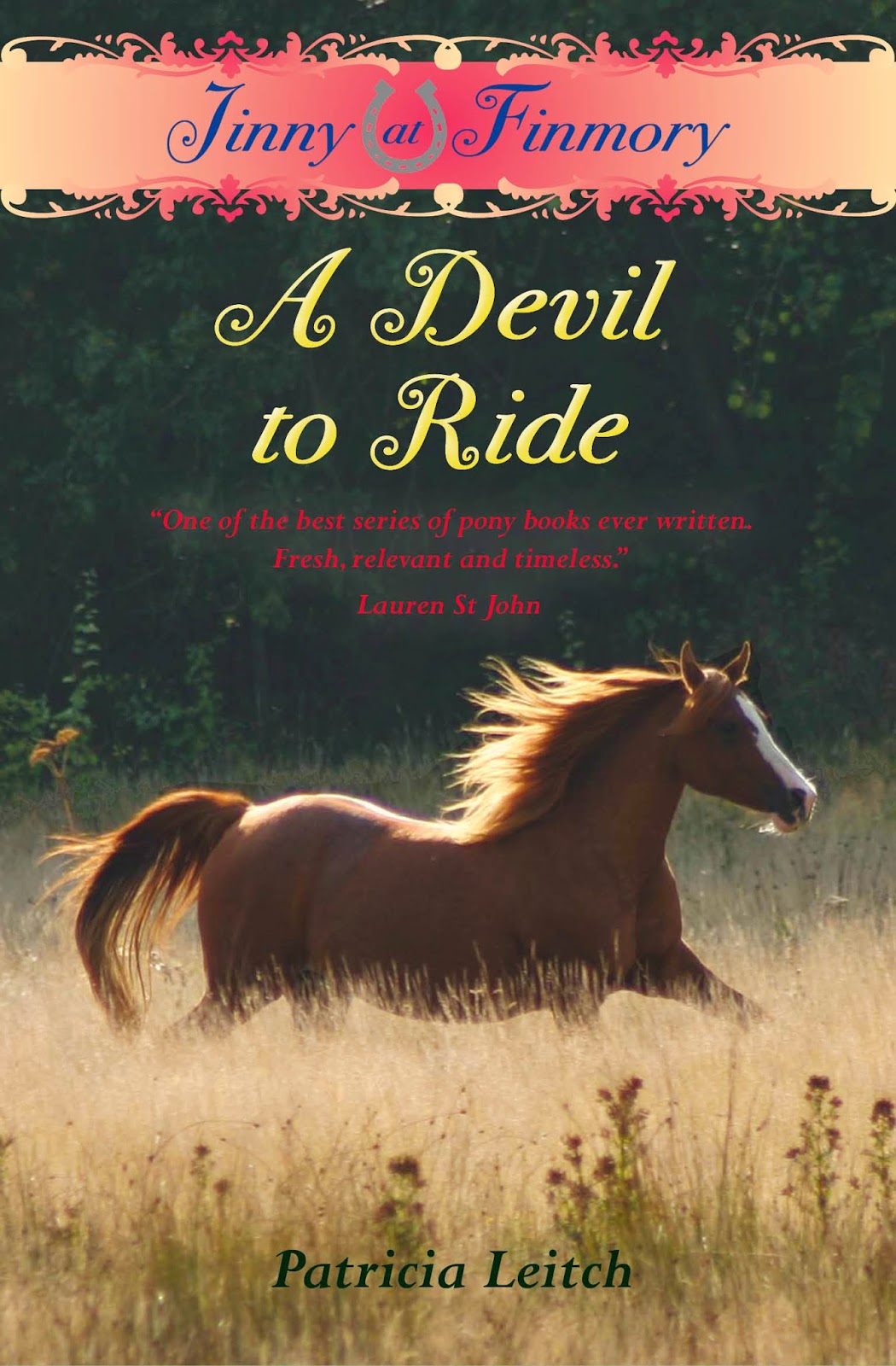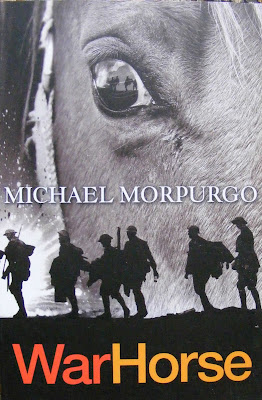PBOTD: 28th March, Patricia Leitch - A Devil to Ride
Today's pony book is the second in the Jinny series, A Devil to Ride (1976). Most pony books, when they have actually achieved the hard work of getting the pony, have the hard work behind them. Not Jinny. At the end of the first book, she succeeds, in nursing a Shantih almost at the point of death back to life. In A Devil to Ride Shantih is fighting fit. Jinny dreams of becoming like the pony book heroines she reads about, but her efforts to ride the recovered Shantih meet with dismal and constant failure.
Jinny and Shantih eventually come to an accommodation, but what Jinny and indeed Shantih love most is galloping over the moors; the speed and excitement is used by Jinny as a method of blocking out the problems that assail her. When she is flying over the moors, she does not have to think about the things her conscience is prompting her to do, or the difficult situations she has to face. Jinny does succeed in schooling Shantih, and does manage the mare with tact and sensitivity, but it is the combination of speed and the utter joy of being with her horse that she loves most:
A Devil to Ride was first published in paperback by Armada in 1976. It appeared in the white horseshoe style cover in 1984, and in the gold horseshoe style in 1993. The book had one hardback outing as a Severn hardback in 1980, with a generic photographic cover that reveals whoever was responsible for cover design hadn't read the book. However much Jinny might want to ride with the Clare Burnley like that, it doesn't happen. Catnip republished the book in 2010, and it is still in print.
Most of the text of this piece is taken from my book, Heroines on Horseback
For much more on Patricia Leitch, see her pages on my website.
“Always finish your schooling on a happy note so that both rider and mount feel satisfied with what they have achieved,” Jinny quoted from her book. “So that’s what we’ll do. Not that we’ve achieved much,” she added, knowing that if she tried to take Shantih round the field twice there wouldn’t be a happy note."
Unlike earlier Leitch books, successful show ring appearances are not the central point of the Jinny books. Jinny may well have swallowed the pony book dream of competition success, but much of the series is taken up with Jinny coming to terms with Shantih’s essential nature, and with learning to share.
Alison Haymonds comments that in earlier books like A Dream of Fair Horses, Patricia Leitch had “serious things to say about the dangers of trying to possess living beings,” and she continues this exploration with Jinny. Jinny’s love for Shantih is all-consuming, and possessive. She wants to be all in all to Shantih; wants the pony-girl dream in which Shantih is the horse only she can ride. But Jinny is very far from being the only one who can ride Shantih: on the contrary it is Ken, the 18-year-old former offender who lives with the Manders family who rides the mare effortlessly.
“Jinny could just make out the comforting whisper of his voice as he soothed Shantih, gentled her, assured her of the rightness of the world when he was with her. Jinny sighed to herself, feeling her own distress flow out of her into the calm silence of the hills. She let go of her jealousy – jealousy that Ken could ride her horse better than she could. It didn’t seem worth bothering about. There was nothing in Ken that said, “Look at me. See how clever I am.” He only showed you how easy it all was, how simple, if you would only learn to let it be.”
 |
| Severn House hardback, 1980 |
 |
| Armada, paperback, 1993 |
“she was all lightness and air as she danced her way across the field.”Jinny fails frequently, but she is a fighter. She is part of a loving family, but is slowly separating herself from it and learning to find her feet in the adult world, as must many of her readers have been. She is pigheaded and stubbornly pursues her desire for conventional equestrian success, despite knowing what Shantih is like. She makes friends with wealthy Clare Burnley in A Devil to Ride (1976) purely because the girl is a success at shows and Jinny believes Clare will be able to help her make Shantih a well-schooled, competitive, horse. Jinny knows full well that Clare is a selfish bully, but she manages to suppress the knowledge, dazzled by the golden glory of the Burnley’s wealth, and their apparent achievement of the successful equine dream Jinny wants.
“D’you think,” Jinny asked her mother, “you could alter that pair of Petra’s cavalry twill trousers for me?”Patricia Leitch captures brilliantly Jinny’s dazzling by those who seem to have everything she ever wanted; she wants to be like them, dress like them, impress them. The Burnleys are only interested in Jinny when it suits them, and she knows it, but still longs for them to like her. On the moors, a pair of ospreys is nesting. Their presence is top secret, but Jinny tells the Burnleys about the birds. It ends in disaster when Clare’s brother destroys the osprey’s nest for the eggs. It is a terrible moment for Jinny, but she gains resolution when she finally confesses to her family:
Arms full of shopping, half in, half out of the car, Mrs Manders turned in astonishment.
“I’ve been trying to get you to try them on for months!” she exclaimed. “Whatever made you think of them just now?”
“Dunno,” said Jinny, but she did. Clare had been wearing cavalry twills.
“I wanted them to like me,” said Jinny, and she told them all that had happened. It was like talking off layers and layers of heavy clothing that had been stifling her and being able to move again, being able to breathe.”
 |
| Catnip, 2010 |
~ 0 ~
A Devil to Ride was first published in paperback by Armada in 1976. It appeared in the white horseshoe style cover in 1984, and in the gold horseshoe style in 1993. The book had one hardback outing as a Severn hardback in 1980, with a generic photographic cover that reveals whoever was responsible for cover design hadn't read the book. However much Jinny might want to ride with the Clare Burnley like that, it doesn't happen. Catnip republished the book in 2010, and it is still in print.
Most of the text of this piece is taken from my book, Heroines on Horseback
For much more on Patricia Leitch, see her pages on my website.



Comments